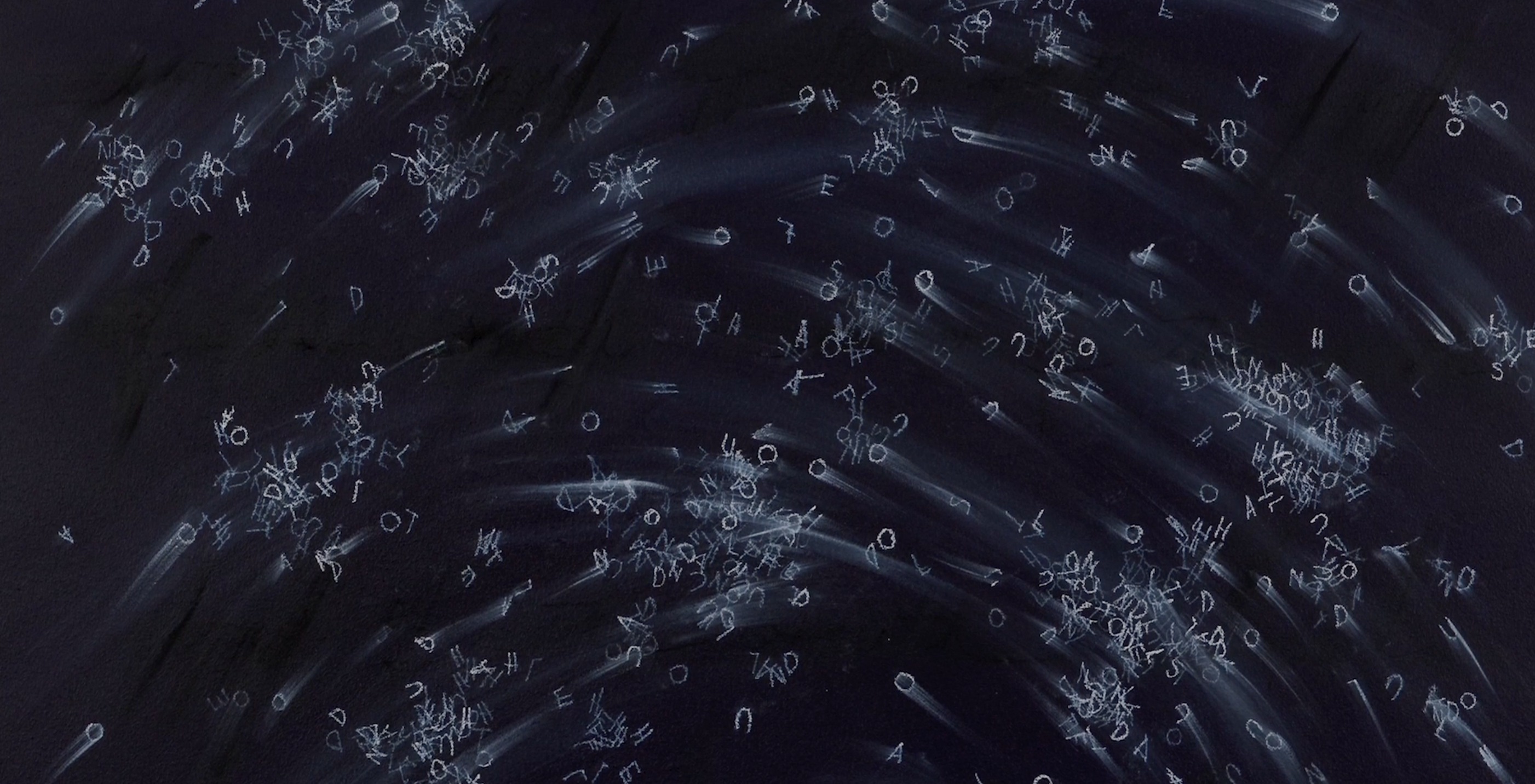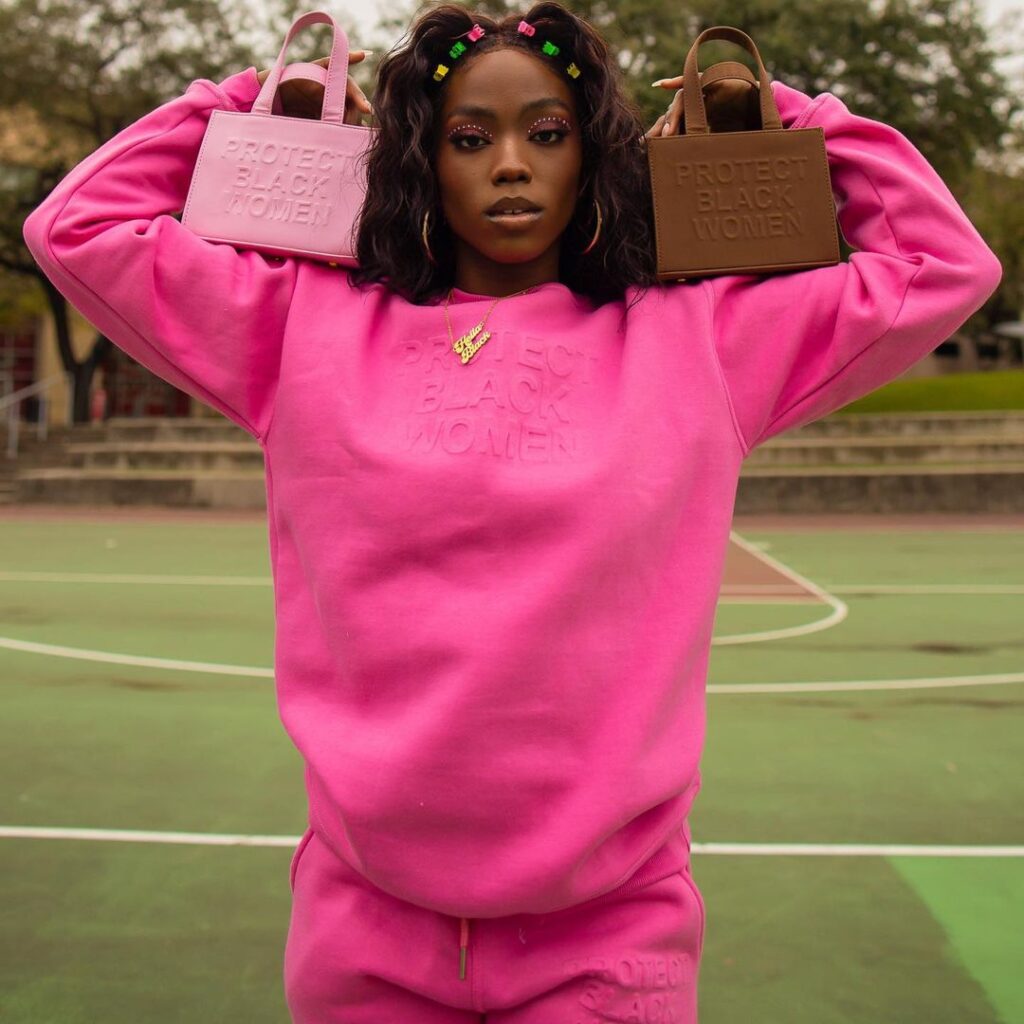Bethany Collins’ Art Offered Me Lessons on The Nuances of Self-Conception

The first painting of Bethany Collins’ work I came across was her piece, “Well, They Just Don’t Match Up” II, from her series titled Noise. It was an undoubtedly alluring visual of white spatters of chalk, layered over seemingly construed white text, that was partially erased across the canvas. I recall the strong feeling of confusion that coursed through me the first time I engaged with her work, yet it was still truly elegant.
Words by Olisa Jr.
For Bethany Collins, a distinct cross-pollination of abstraction and portraiture represented her constant delineation on identity, herself being born of mixed-race, and the contesting of racial scrutiny her work has faced over time. And while I wasn’t born of mixed race, I hadn’t yet, till then, come across a piece of art like hers that acutely portrayed the emotions and feelings of endearingly battling with self-identity and resolution of it. Yet, this uniqueness of her work taught me that the contradictions and nuances within also convey who we are at any moment in our lives.

Inspired by her love of language, Collins’ work is a compelling helix of thought that often nurtures parallels between the guiding structures of society and the very beings that exist within it, especially intriguing in the sense that her approach to assessing both entities are rooted in the same conceptual process; a process perfectly portrayed in her latest exhibition, Cadence. Putting three American songs (The Star-Spangled Banner, Dixie, and Auld Lang Syne) under the microscope, the exhibition explores the notions of adaptations and erasures present in the texts that shape our national identity.
“Each of these songs are contrafactum, a musical term referring to a song in which the melody is similar to another, but the lyrics have changed,” she says. “This tactic of altering the lyrics of important songs has been historically used to serve different political agendas.” And while the focus of her influence in my life might not relate very much to the scepticism of any political agenda, her work in this exhibition points to the same lingering effect of complexities in understanding ourselves.

The three songs on display, recurrent silhouettes of rhythmic melodies but altered lyrics, suggested that while the singers of each of these different songs supported different ideologies and systems, they were all still connected by a singular nucleus. Collins’ technique—as, of all things, operating under a notion of language—suggested the same thematic grounds with identity. A penetrating visual suggests that assessing and attempting to understand oneself is primarily cognitive but still influenced by interactions with the social world around us, or simply the multiplicity of cultures and beliefs that are and have been seemingly present through history. But for me, the most impactful thing Collins’ work communicates, acknowledging the racial scrutiny her work has come under over the last few years, is the notion that reclamation of our own …my own identity is also birthed through the process of continuous visual and conceptual disruption of the dynamics of power and history.

Now, reflecting on the influence of Collins’ work—and on viewing her current exhibition—on myself, I am shown that in the process of trying to understand each and every molecule of our beings, we must accept the reality that there truly isn’t a definite answer, but rather a varying landscape of many different answers that present to us who we might be, or even, who we can become.
As a young writer and simply a young man, being plagued with feelings of uncertainty is more than common amongst my peers, myself included. The scepticism, the unrelenting confusion, the infinite count of thoughts that linger through our minds every day all play a crucial role in the beauty of knowing that each of us as humans are connected more than we can understand, on a level that looms greater than our eyes might be able to see. And while it might present itself as a fault in the stars, I am thankful for this conundrum, as it is the gladfully, irrevocable nuance of self-conception.
Bethany Collins’ latest exhibition Cadence is currently on view at Patron Gallery till April 16th.

Check out the GUAP Arts & Culture section, to discover new art, film, and creative individuals.




![ZINO VINCI’S ‘FILTHY & DISGUSTING’EP BRINGS YOU TO THE CORE OF THE ARTIST [@ZinoVinci]](https://guap.co/wp-content/uploads/2023/10/Zino-4.jpg)





![Remel London’s [@Remel_London] “Mainstream” is a must attend for upcoming presenters!](https://guap.co/wp-content/uploads/2017/02/REMEL-LONDON-FLYER-FINAL-YELLOW-COMPLETE-1.png)